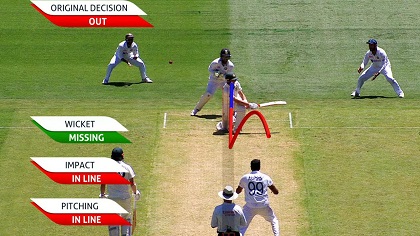
How the Decision Review System (DRS) Revolutionized Cricket Decision-Making
Cricket, often dubbed the “gentleman’s game,” has evolved significantly over the years. One of the most groundbreaking developments in the sport has been the introduction of the Decision Review System (DRS). This technological innovation has transformed the way cricket decisions are made and has brought a new level of accuracy and fairness to the game.
What is the Decision Review System (DRS)
The Decision Review System, commonly known as DRS, is a set of technology-based tools designed to assist match officials in making correct decisions on the field. It was first introduced in Test cricket in 2008 and later extended to One-Day Internationals (ODIs) and Twenty20 Internationals (T20Is). DRS comprises several key components, including ball-tracking technology, hotspot cameras, and snickometer.
Improved Accuracy in LBW Decisions
One of the most significant benefits of the DRS is its impact on LBW (Leg Before Wicket) decisions. In the past, LBW decisions were often a matter of interpretation, leading to controversial outcomes. With the advent of ball-tracking technology, DRS provides a clear trajectory of the ball after it strikes the batsman’s pad. This has greatly improved the accuracy of LBW decisions, ensuring that the right calls are made.

Picture Source: WikiPedia
Eliminating Umpiring Errors
Umpires are human and prone to making mistakes, which can have a profound impact on the outcome of a cricket match. DRS allows teams to challenge an umpire’s decision if they believe it to be incorrect. This has significantly reduced the number of erroneous calls, making the game fairer for both sides.
Enhancing Fair Play and Sportsmanship
Cricket is a sport built on the principles of fair play and sportsmanship. DRS aligns perfectly with these values by ensuring that decisions are made based on concrete evidence rather than guesswork. Players are less likely to engage in disputes or confrontations with umpires, as they have a mechanism to challenge decisions they consider unfair.
Challenges and Controversies
While DRS has undoubtedly improved decision-making, it hasn’t been without its share of controversies. The accuracy of ball-tracking technology and hotspot cameras has been debated, and there have been instances where players and teams have questioned the system’s reliability. However, the constant refinement of DRS technology aims to address these challenges.
Conclusion
The Decision Review System has brought a level of precision and fairness to cricket that was previously unimaginable. It has made the game more transparent and has significantly reduced the influence of human error on match outcomes. While not without its challenges, DRS represents a significant leap forward in the evolution of cricket, ensuring that decisions are based on concrete evidence and enhancing the overall integrity of the sport.
As cricket continues to evolve, the Decision Review System stands as a testament to the sport’s commitment to embracing technology to make the game more just and exciting for players and fans alike.



